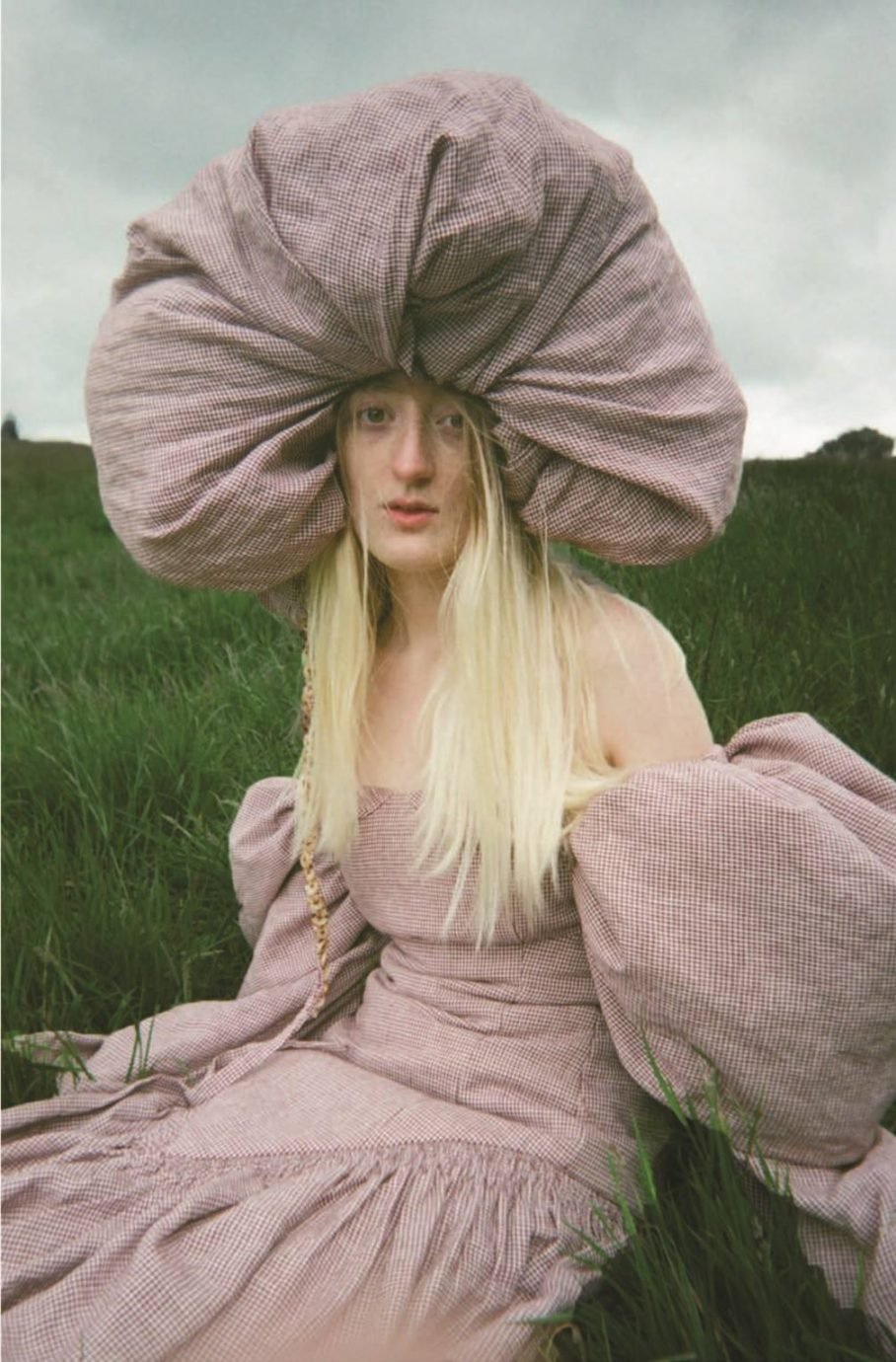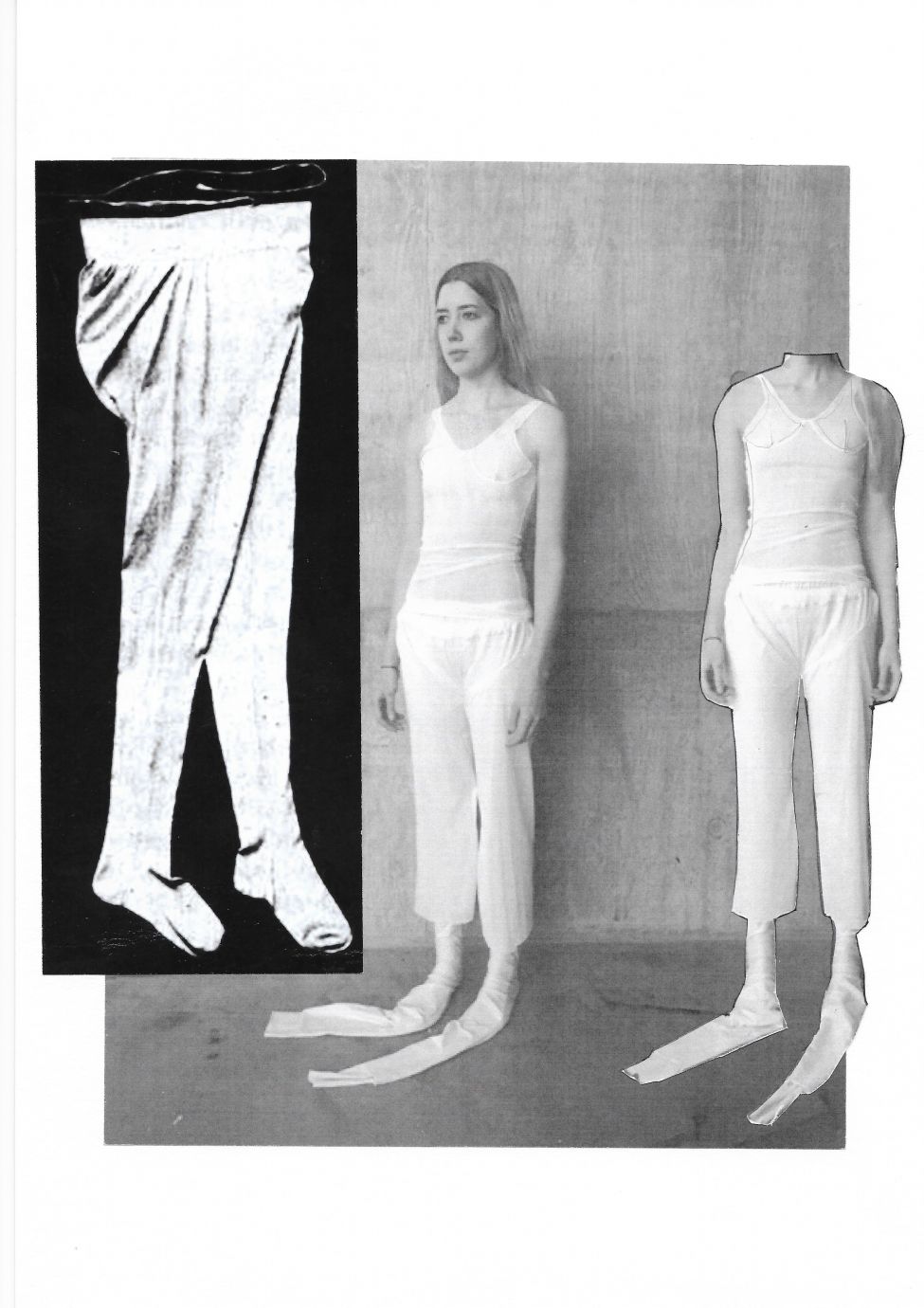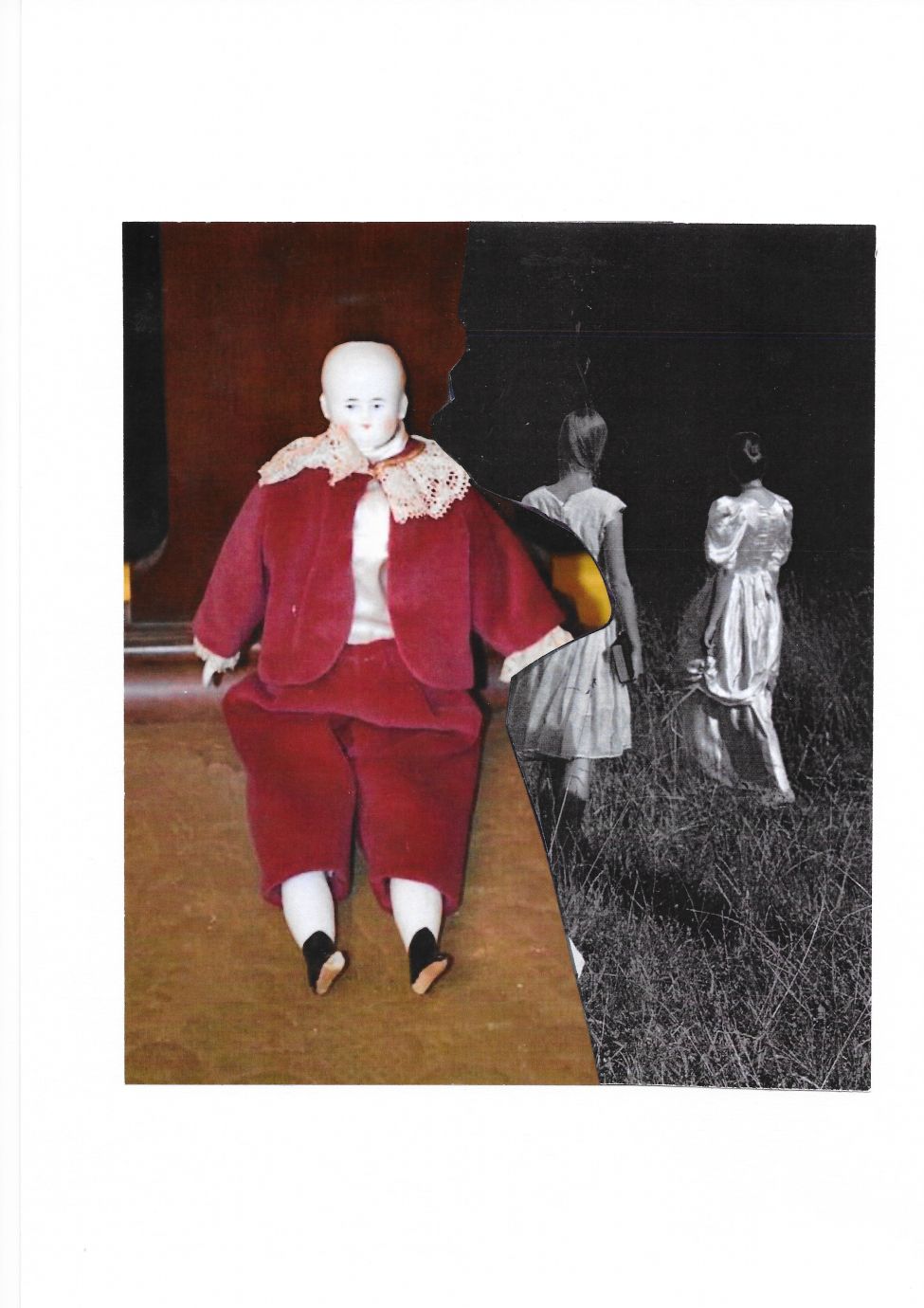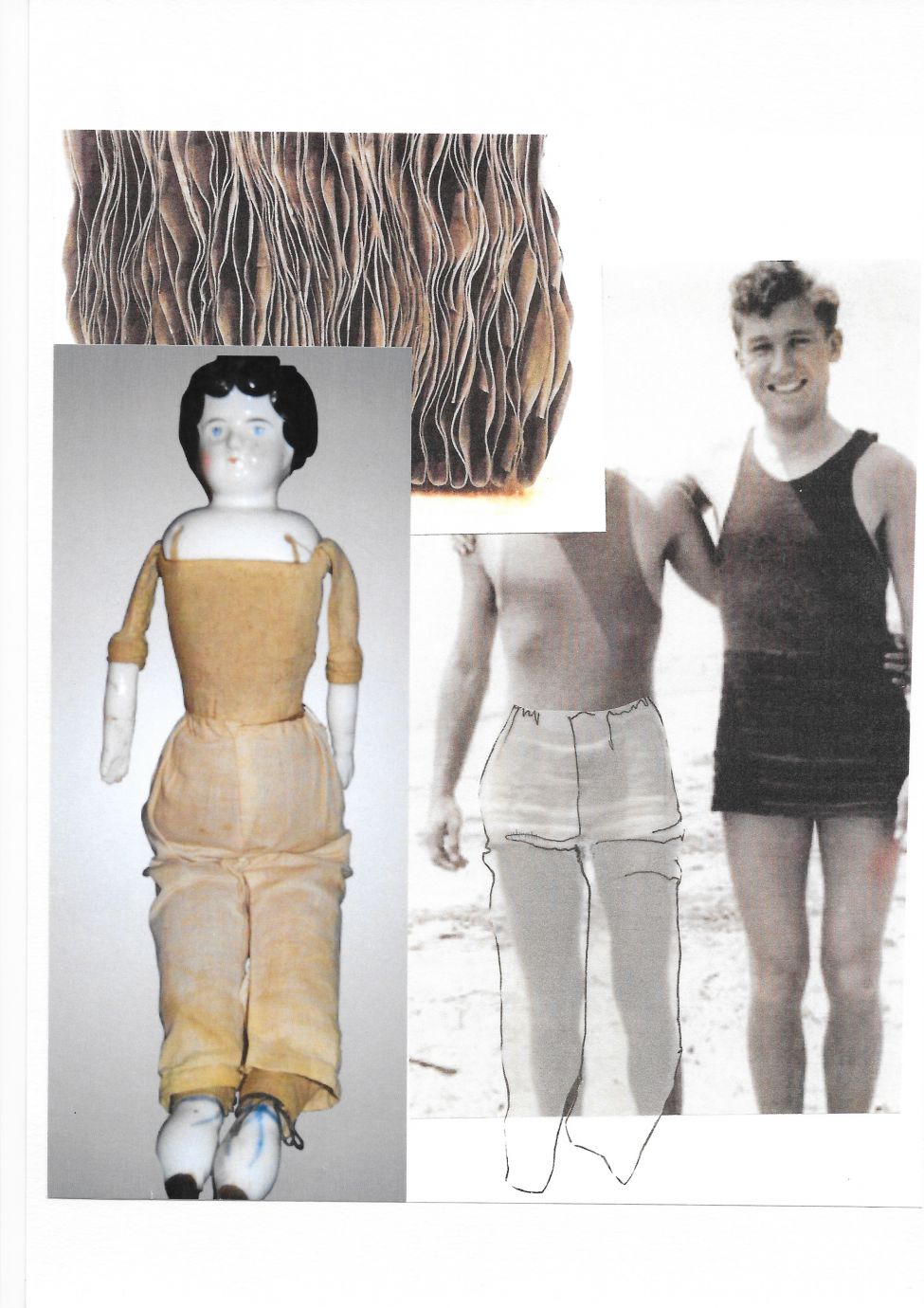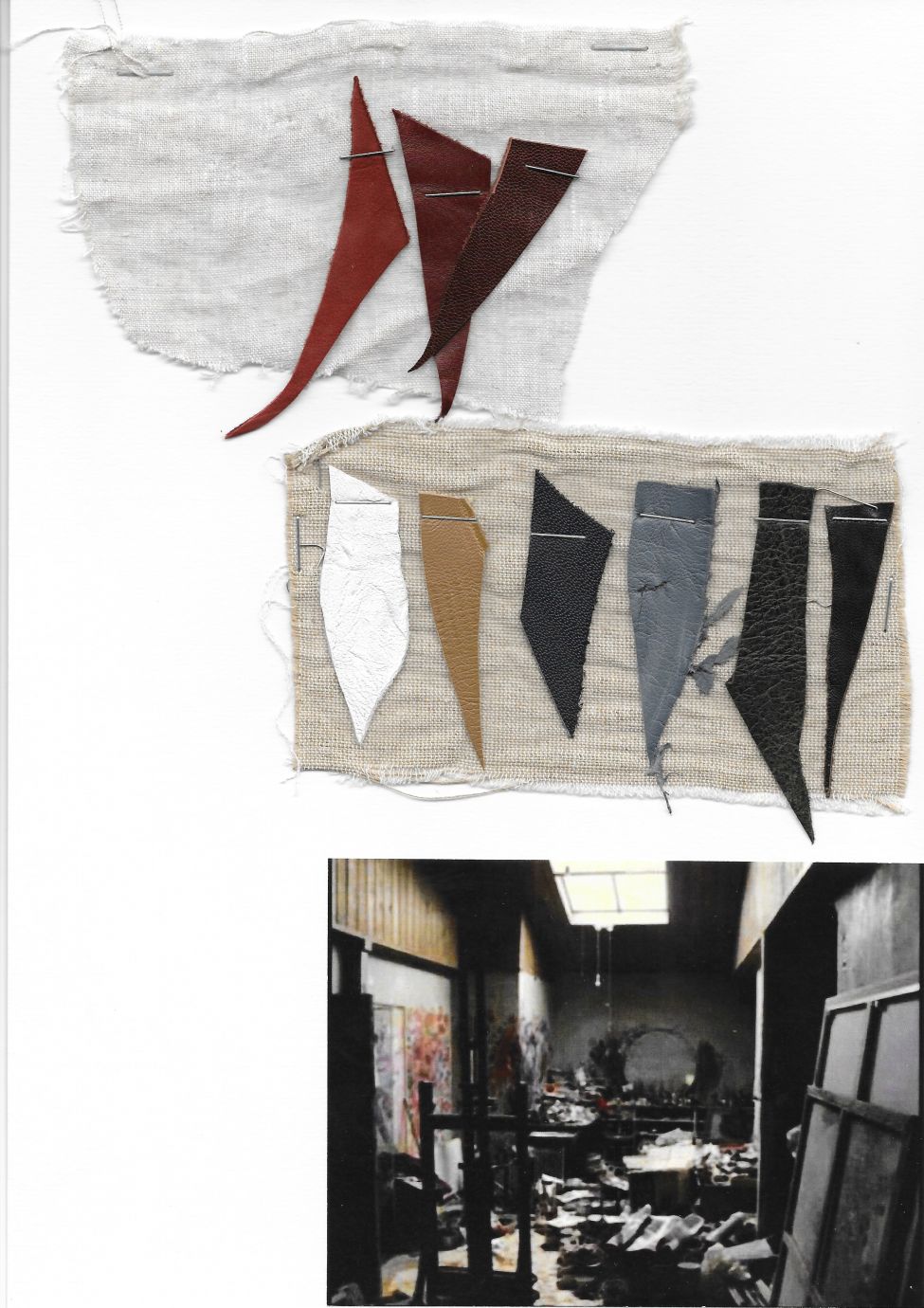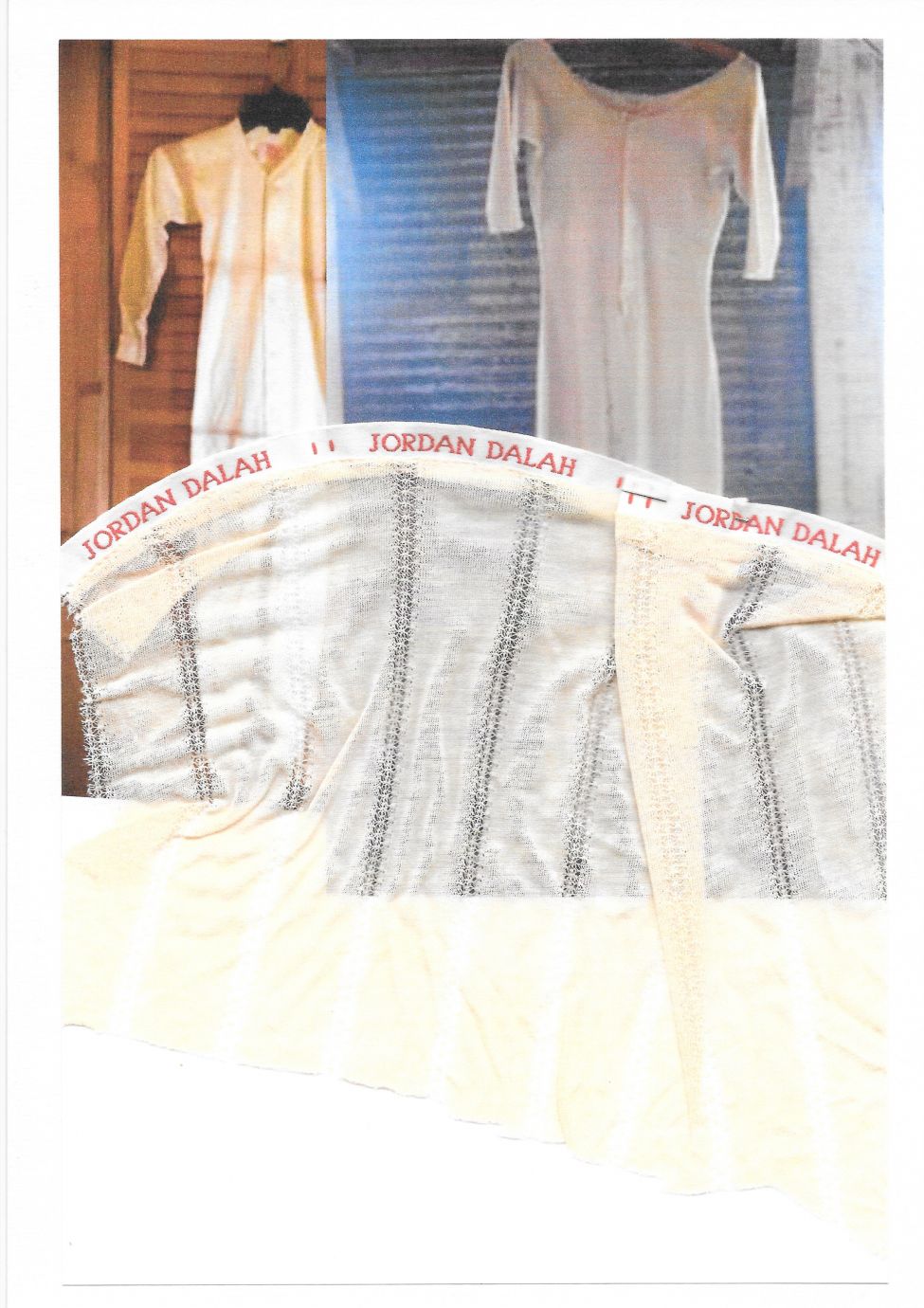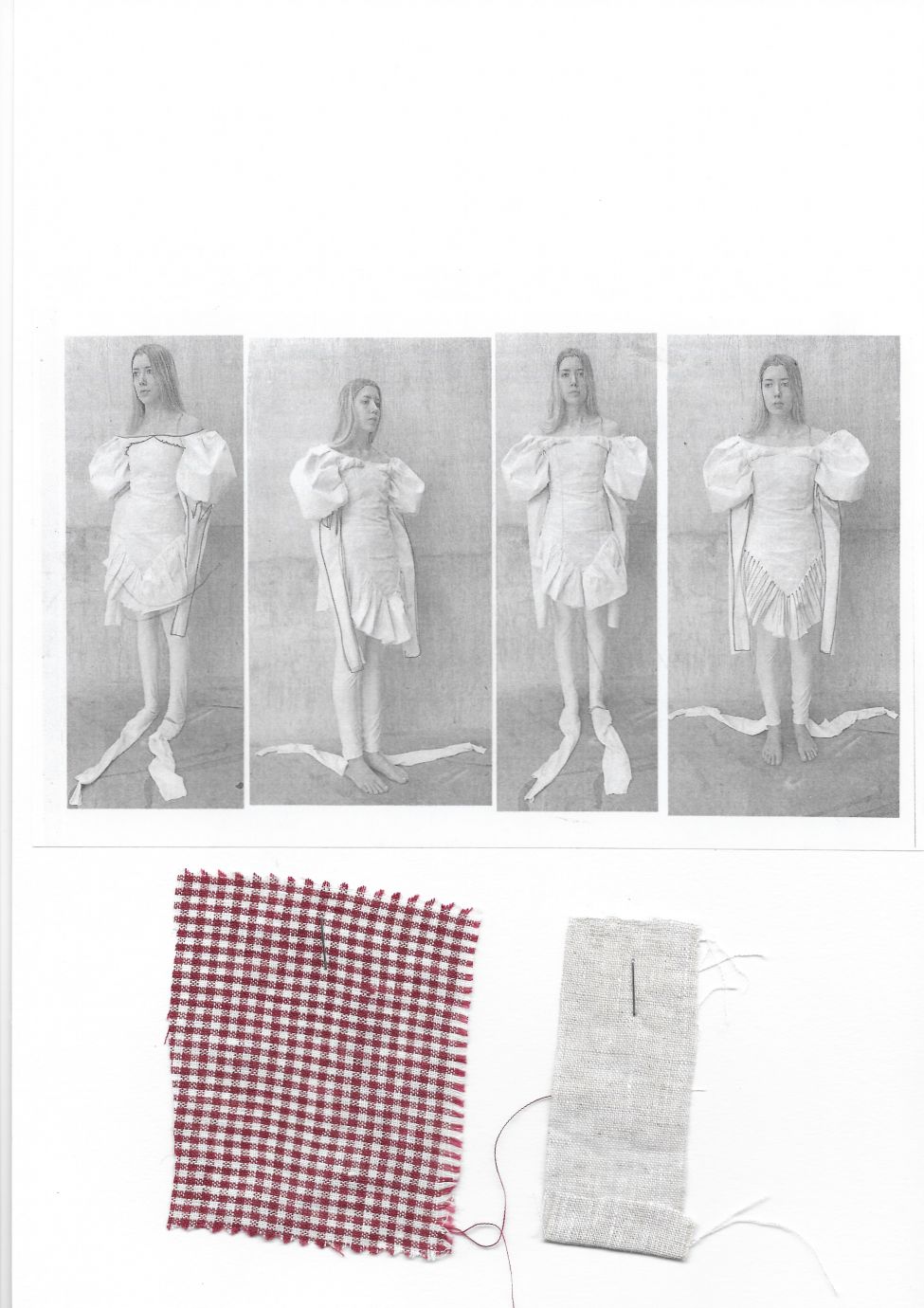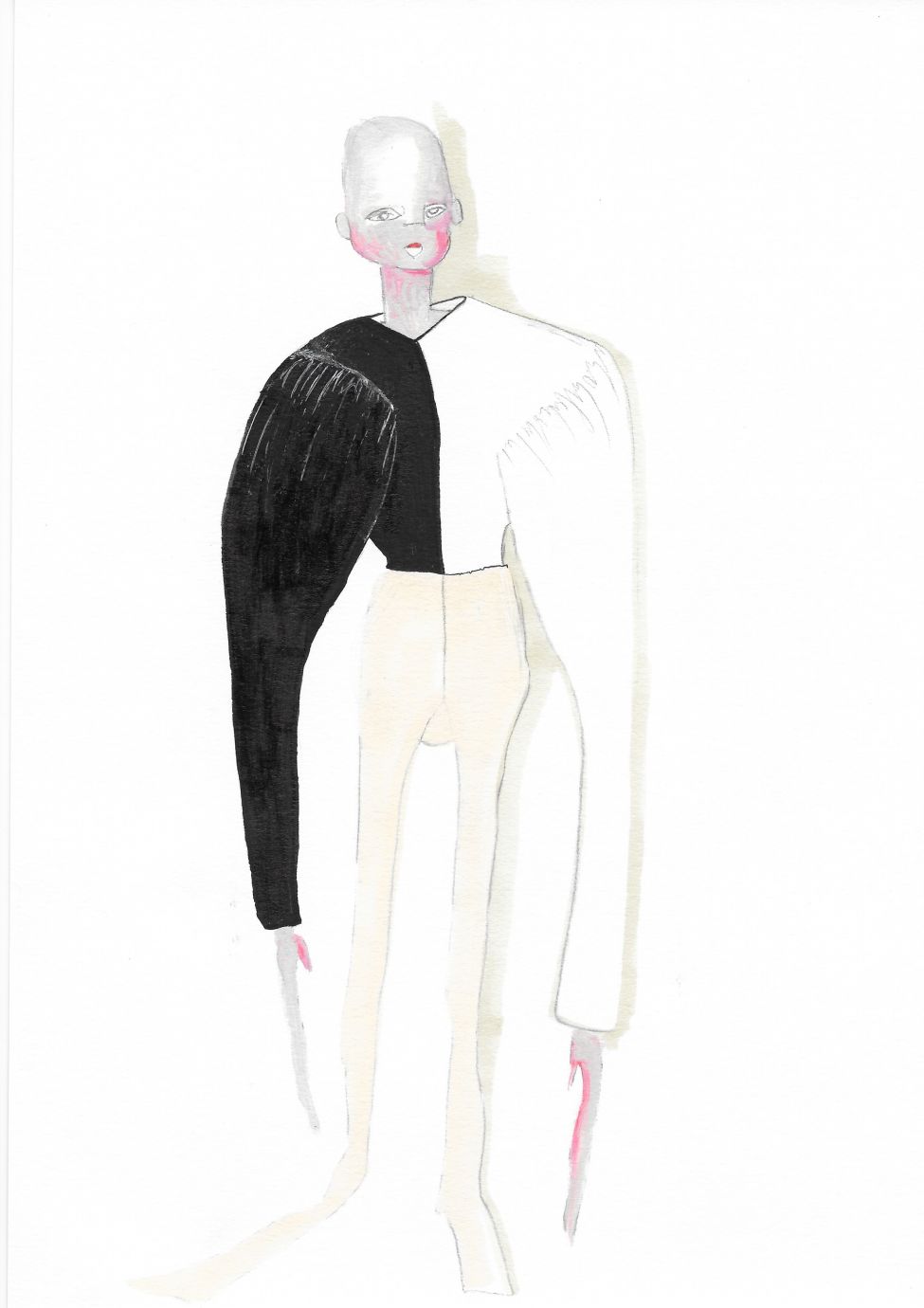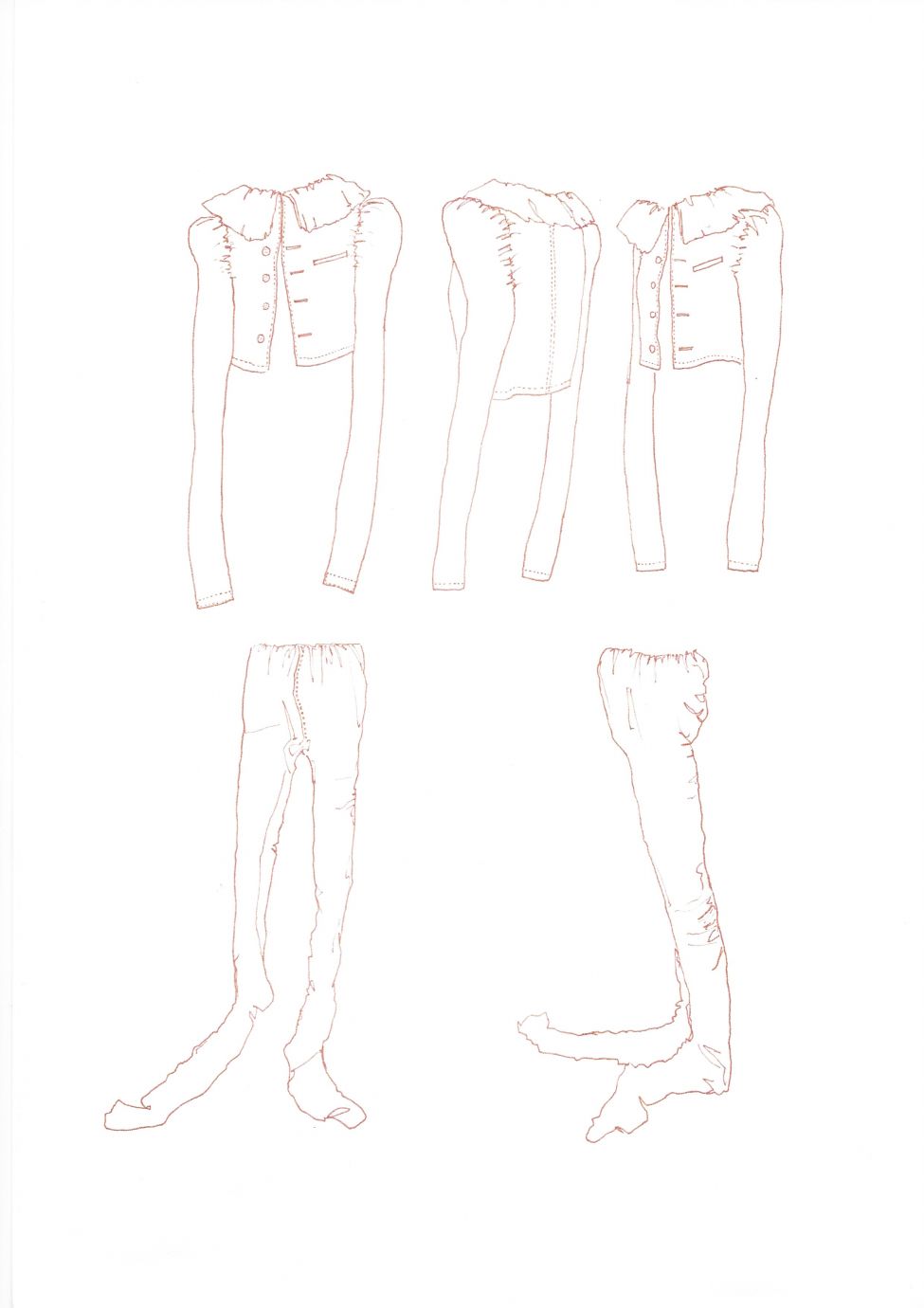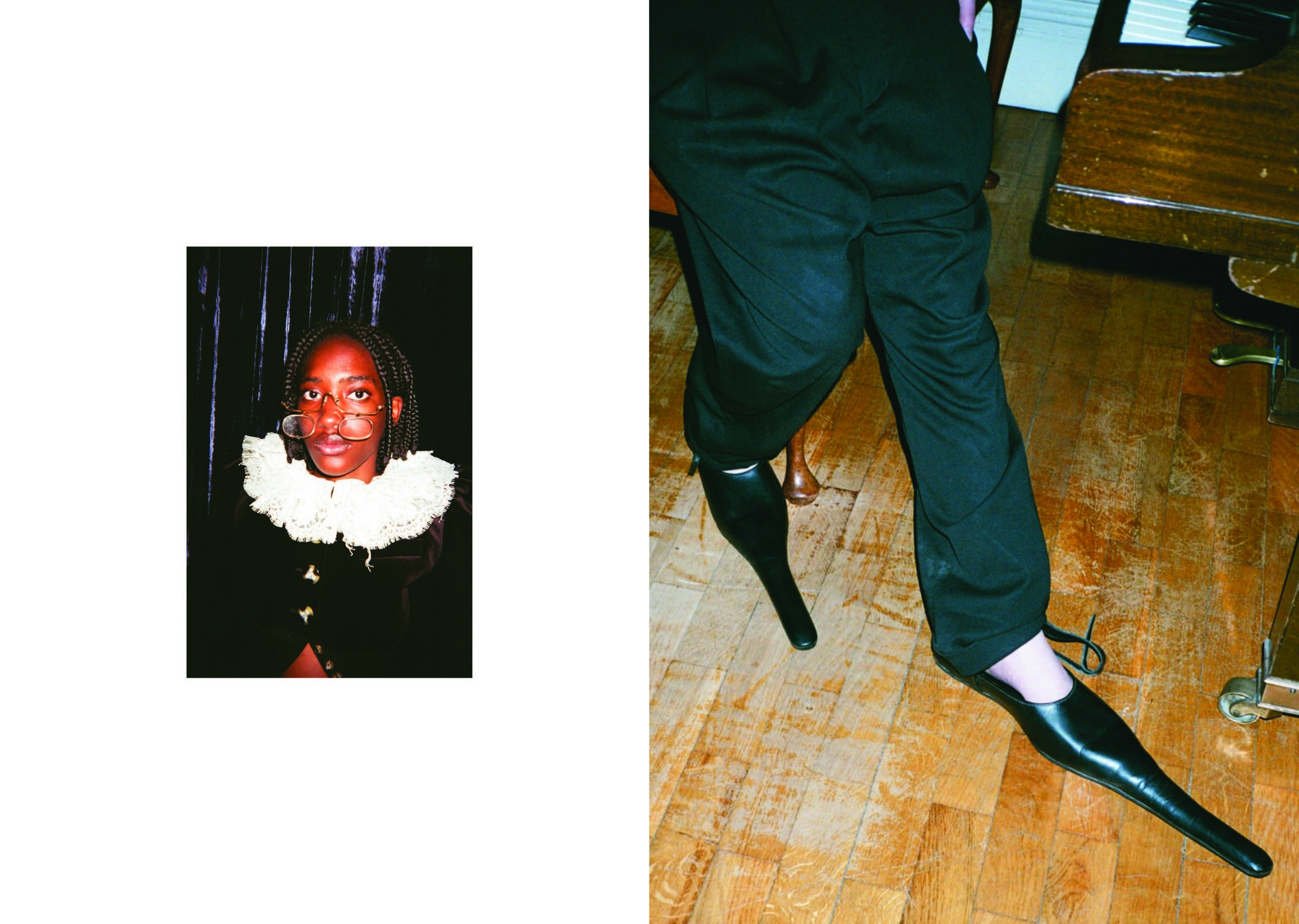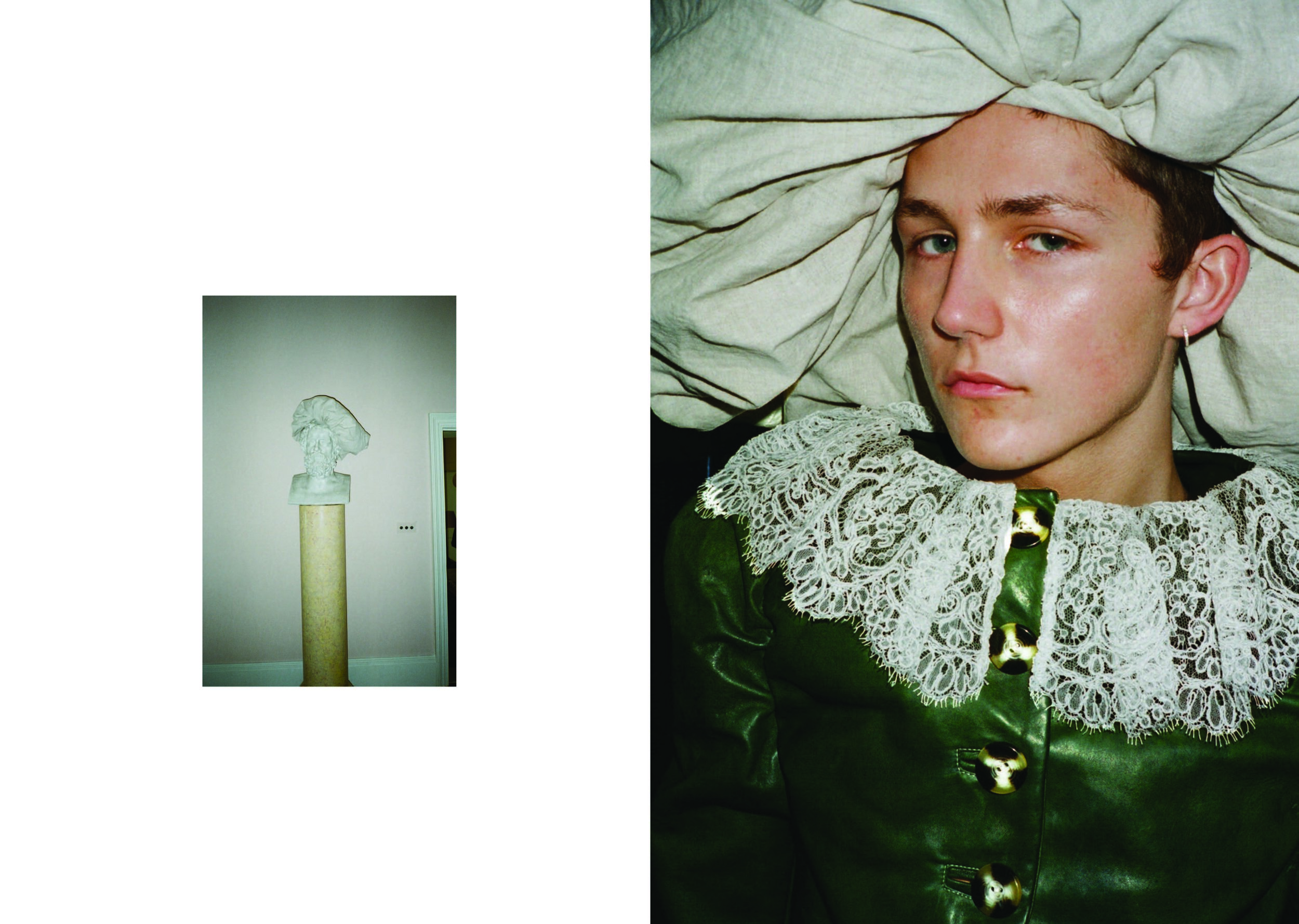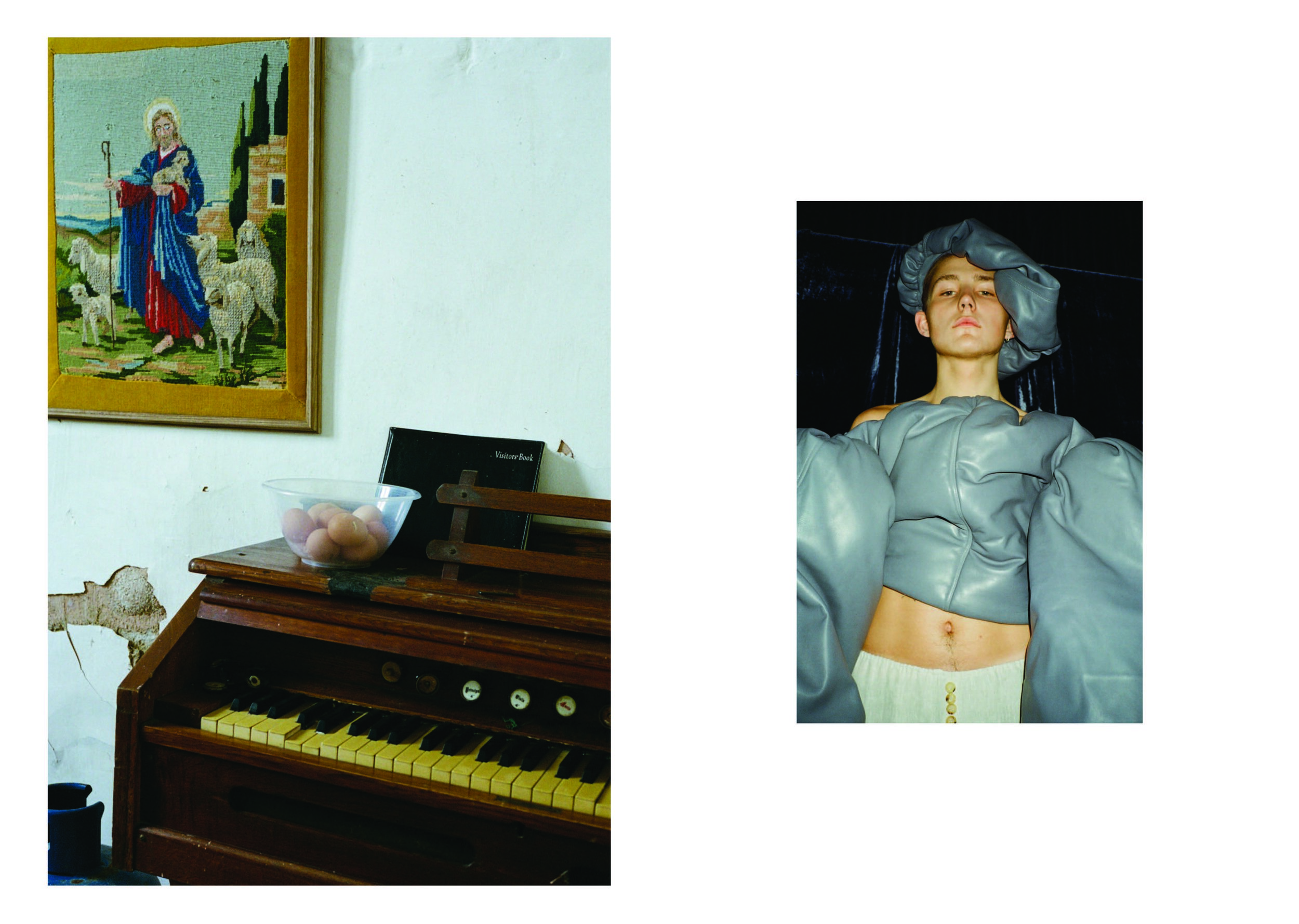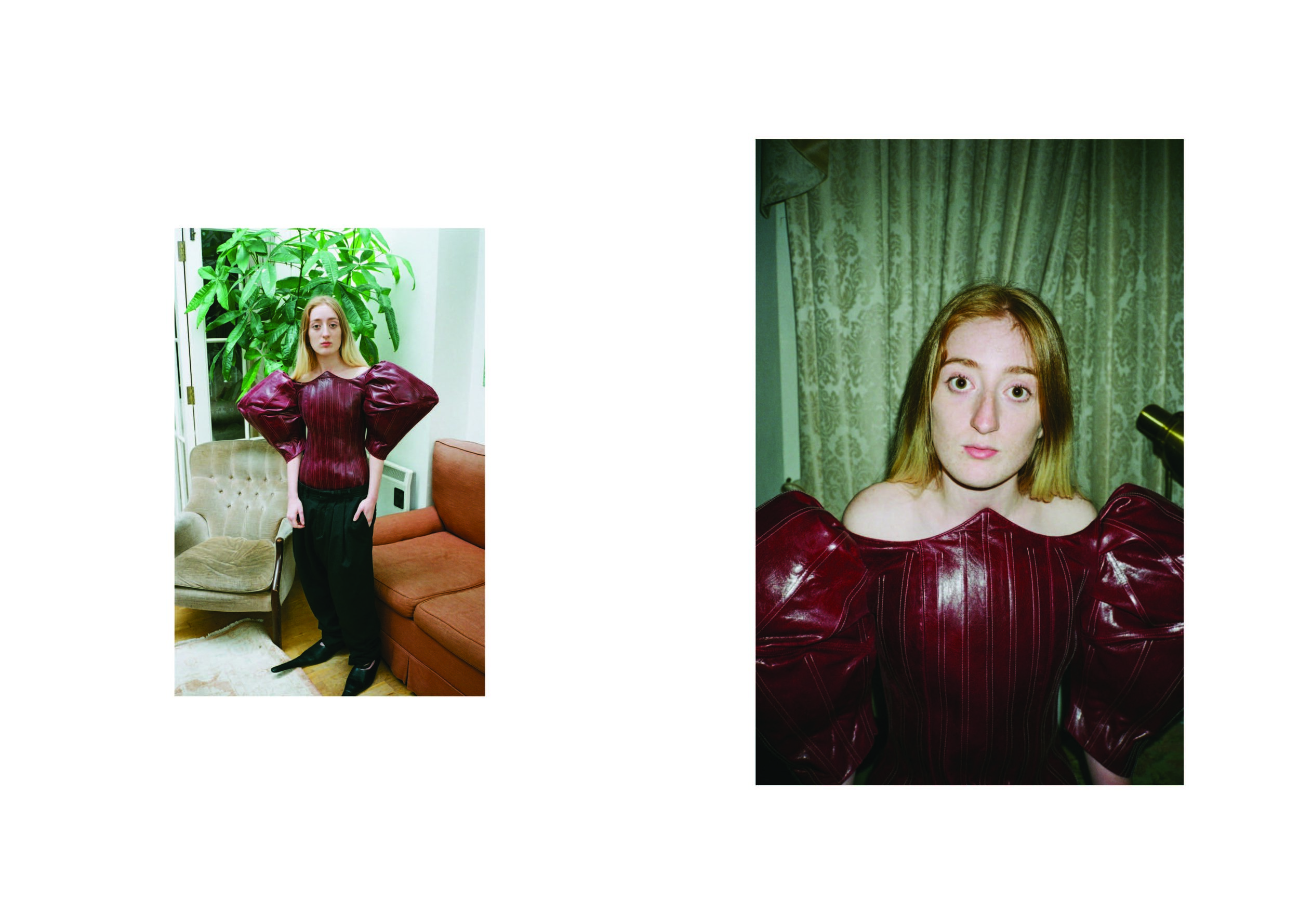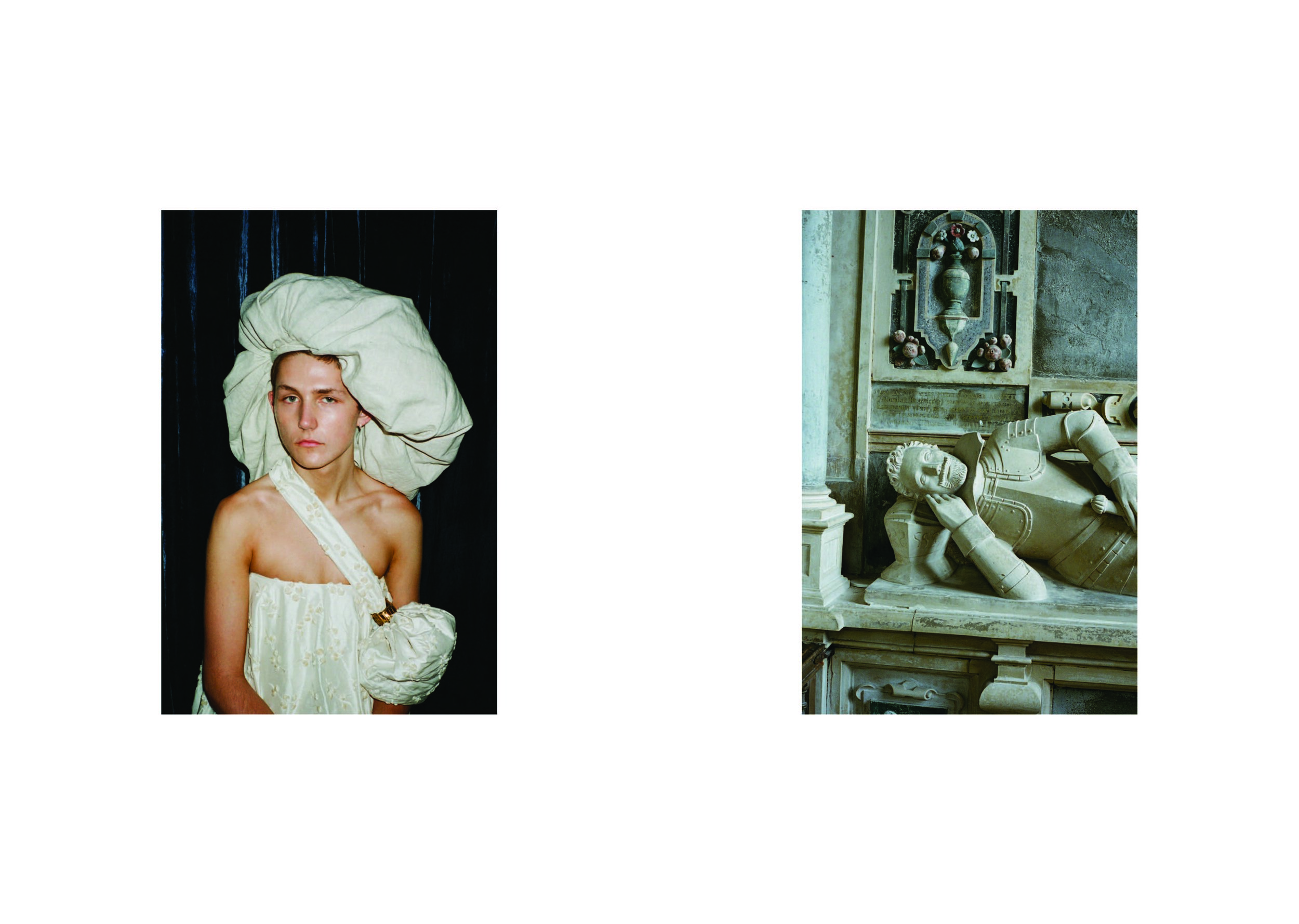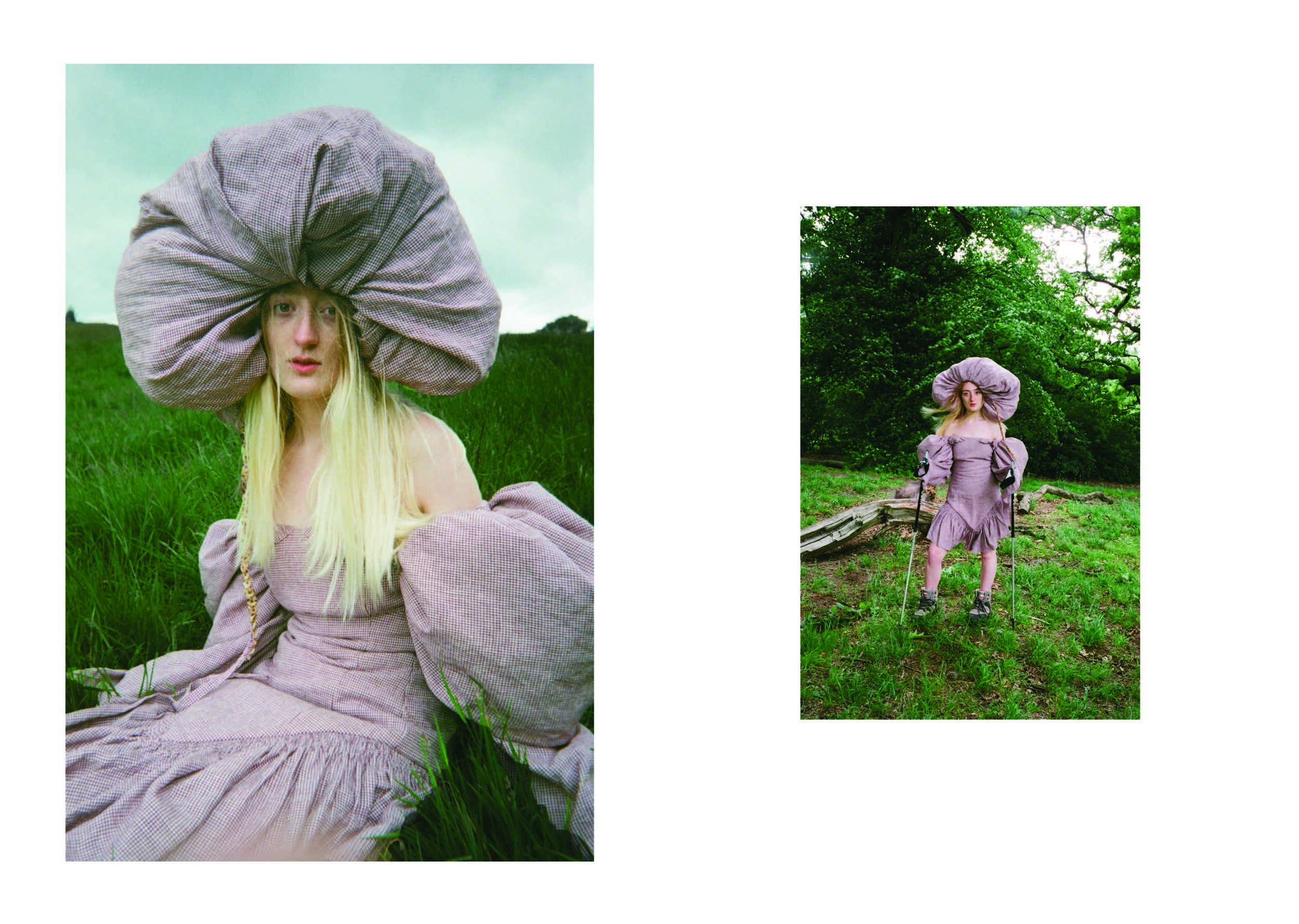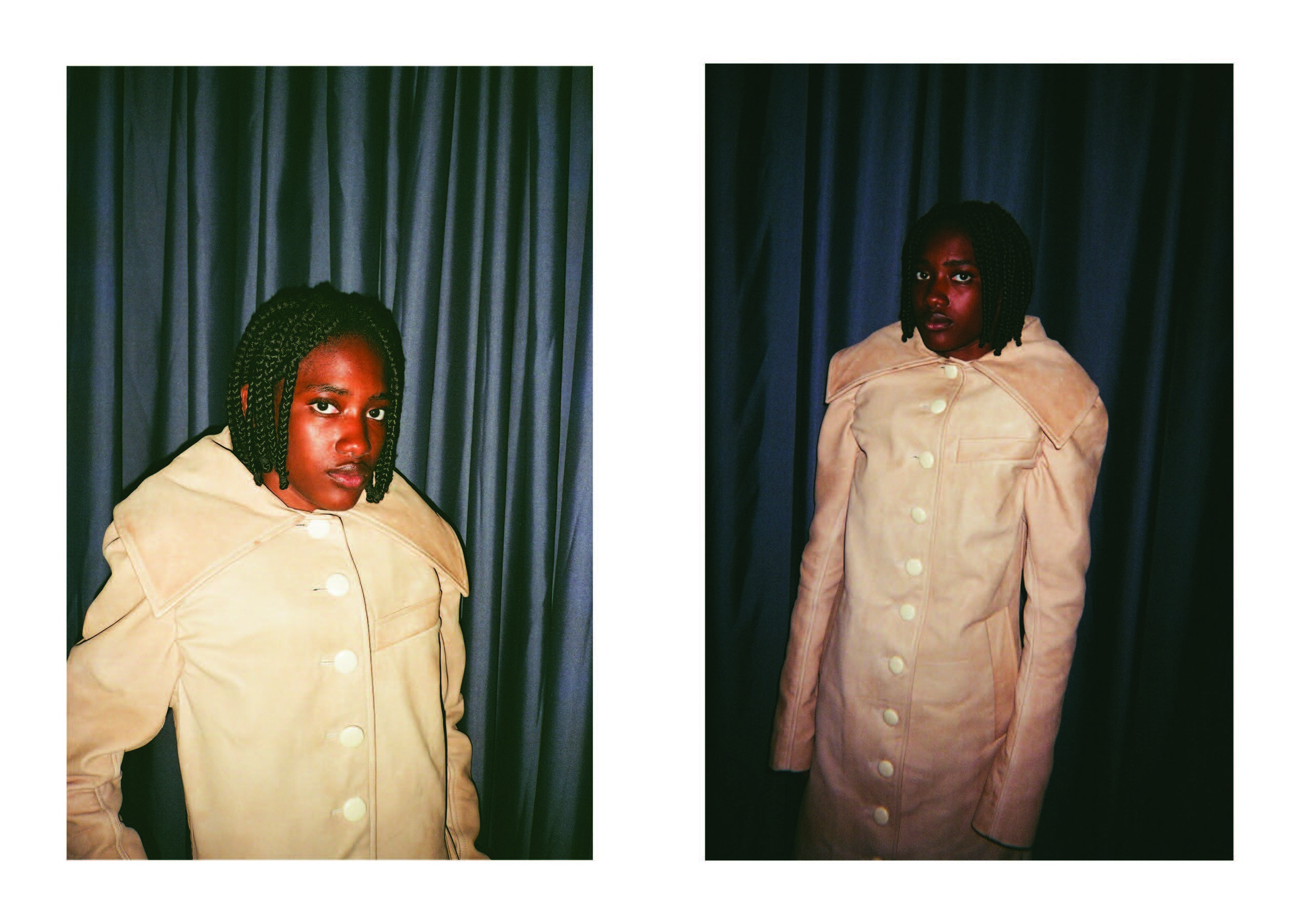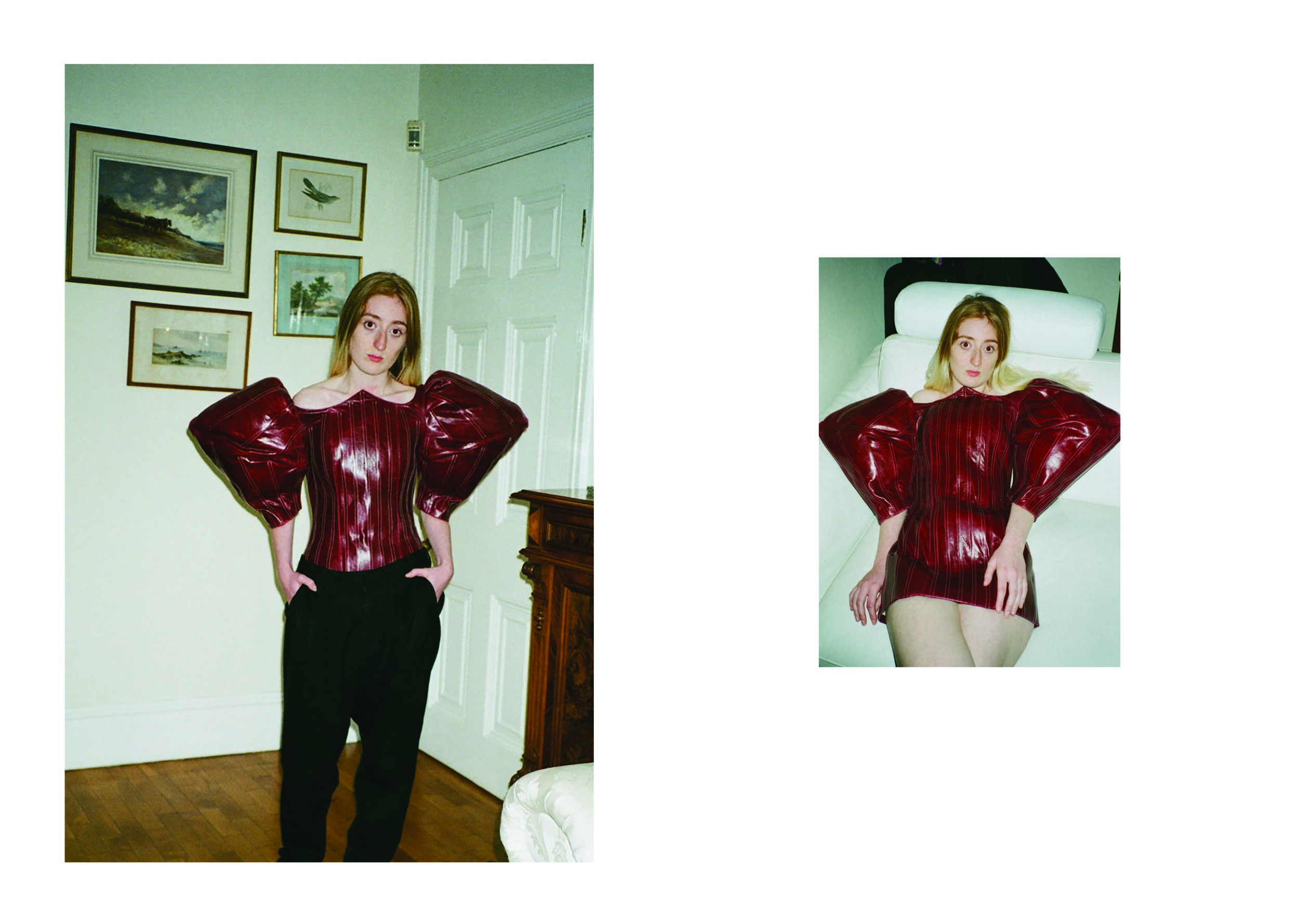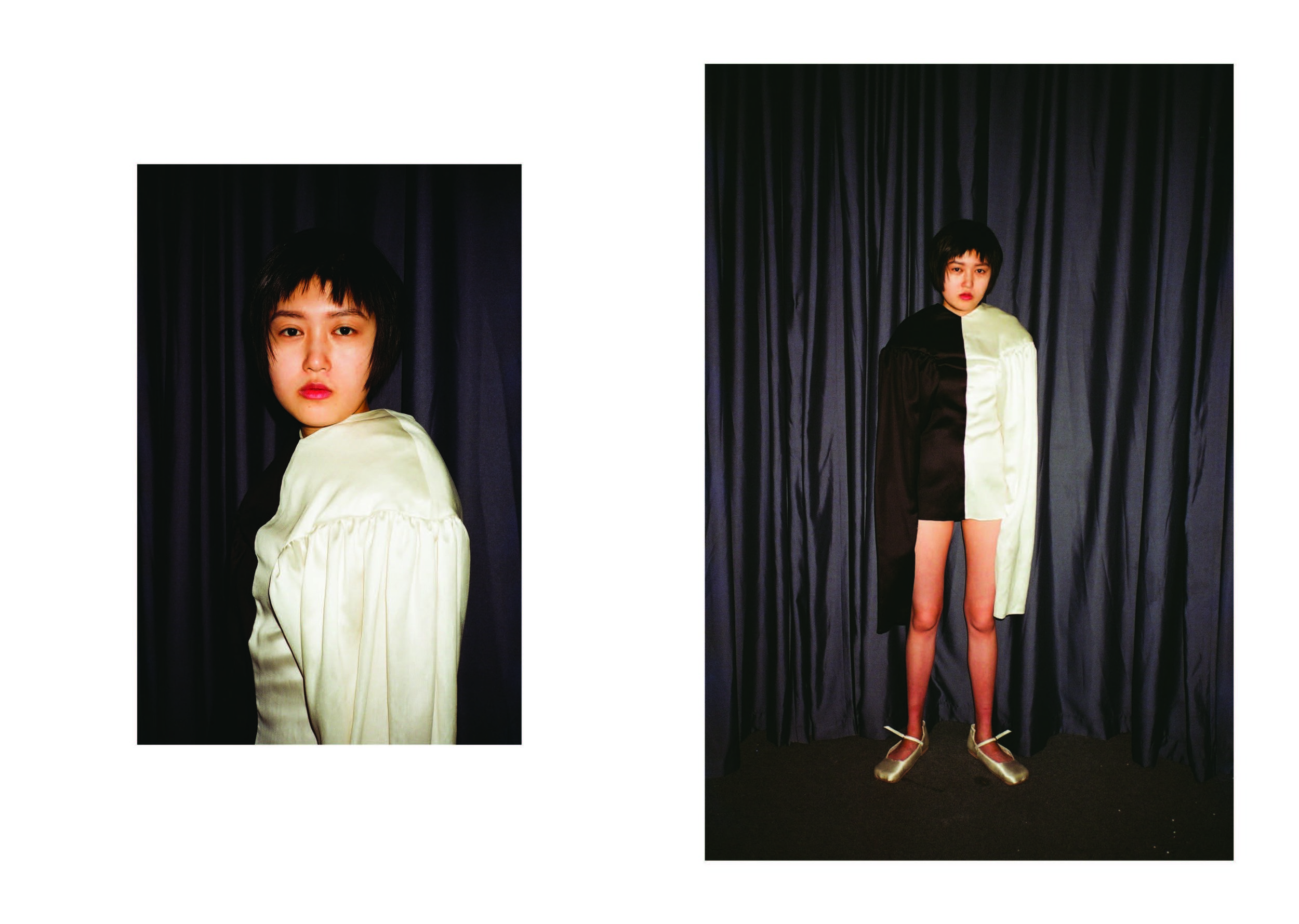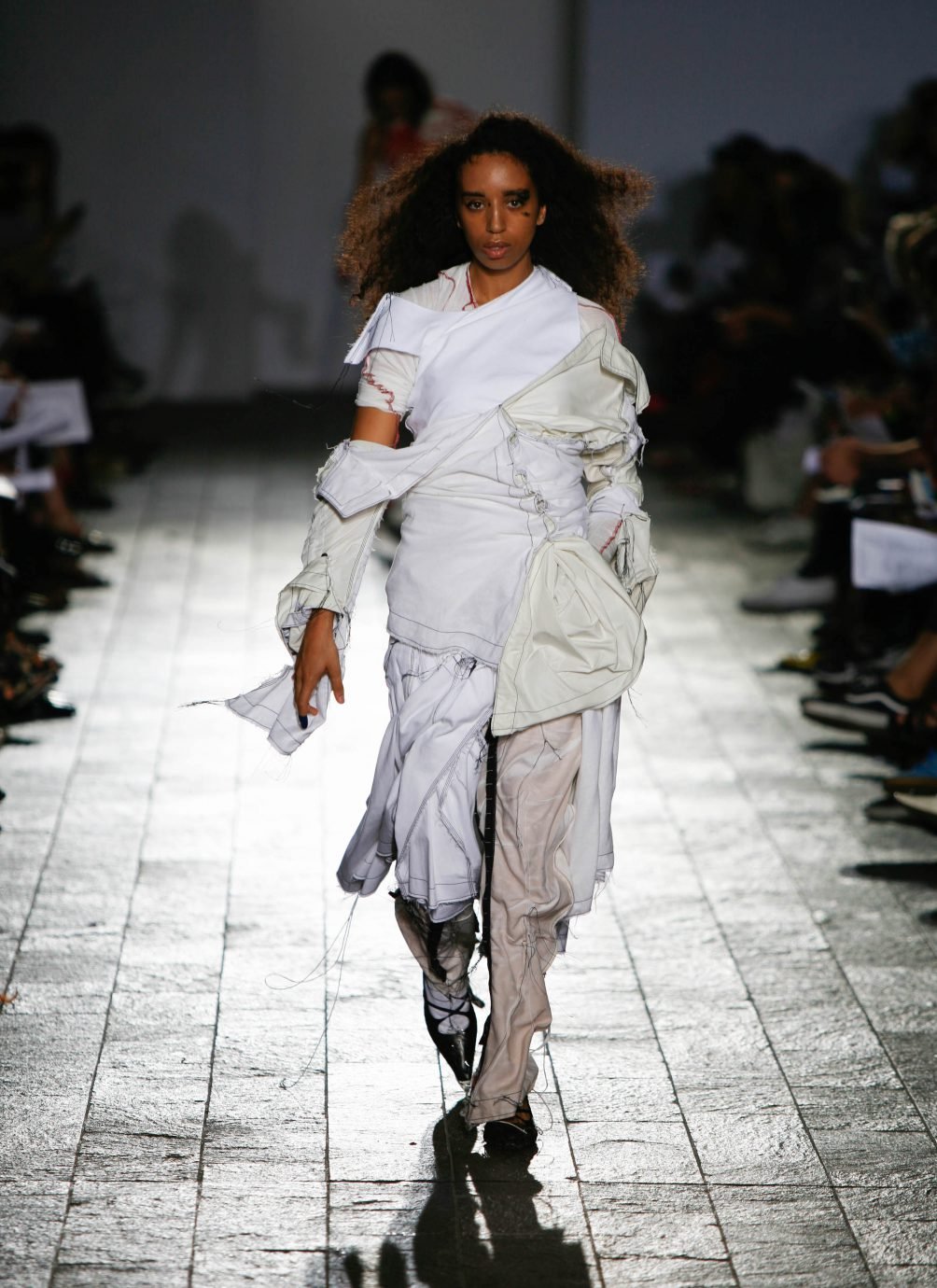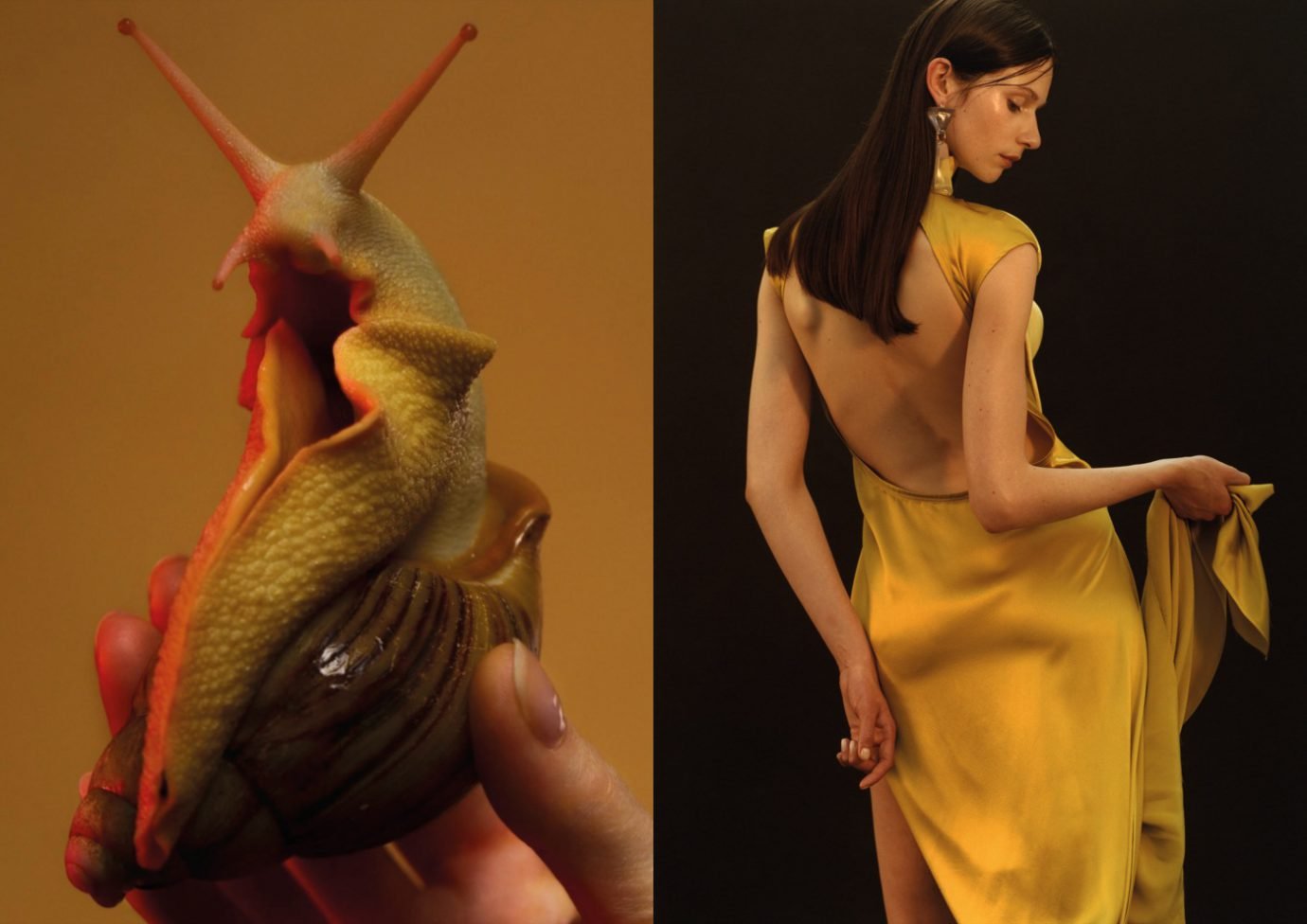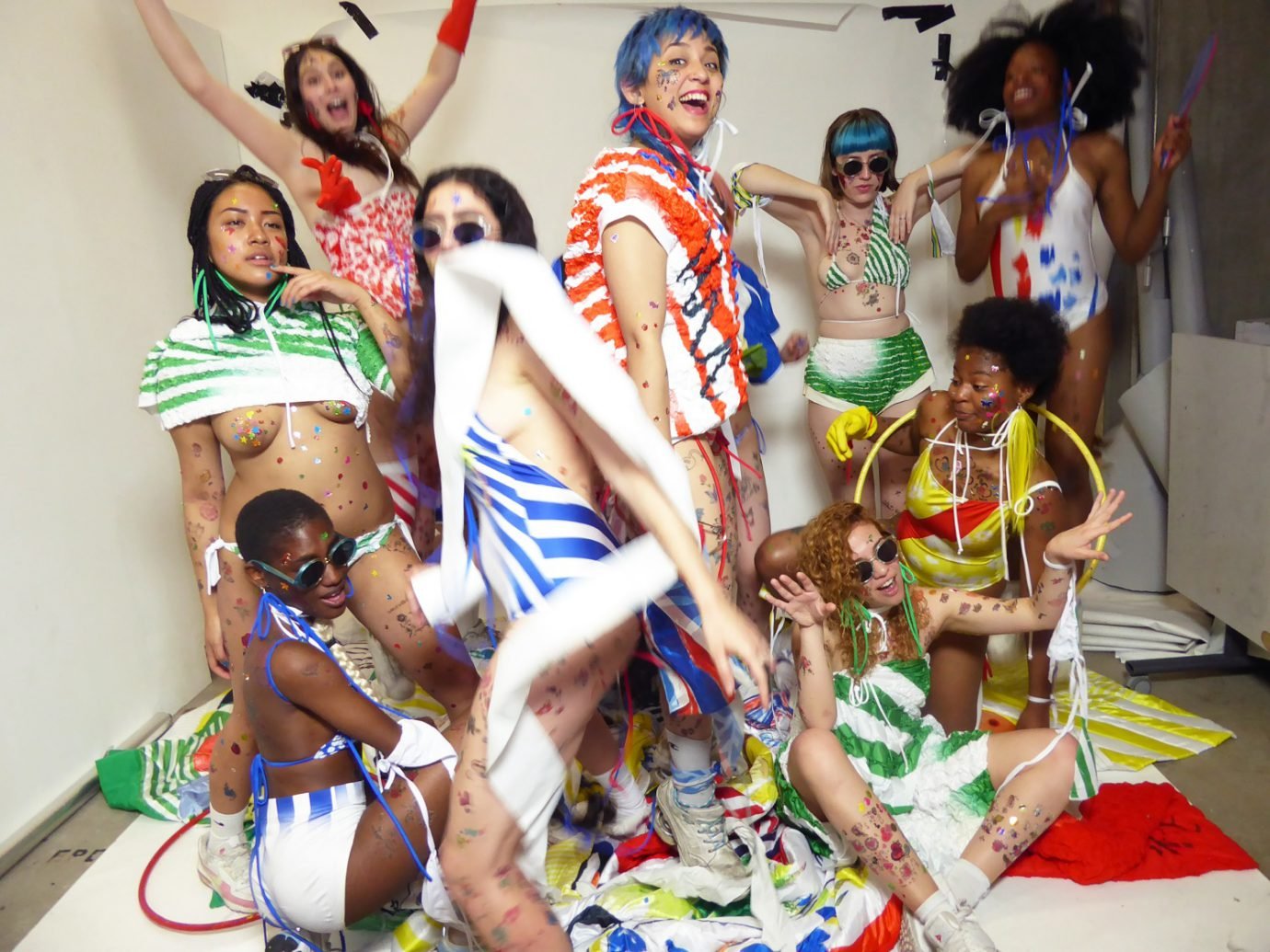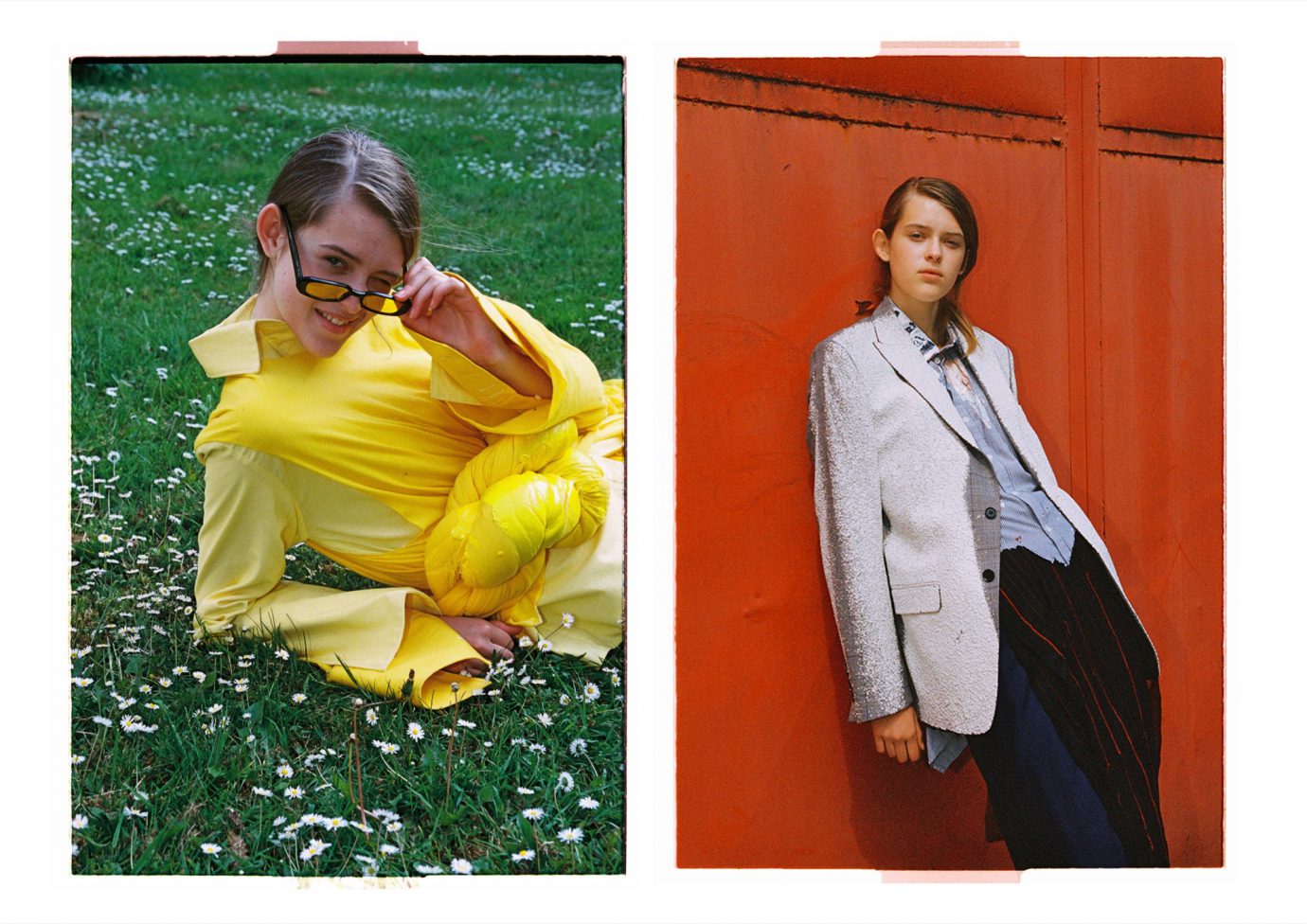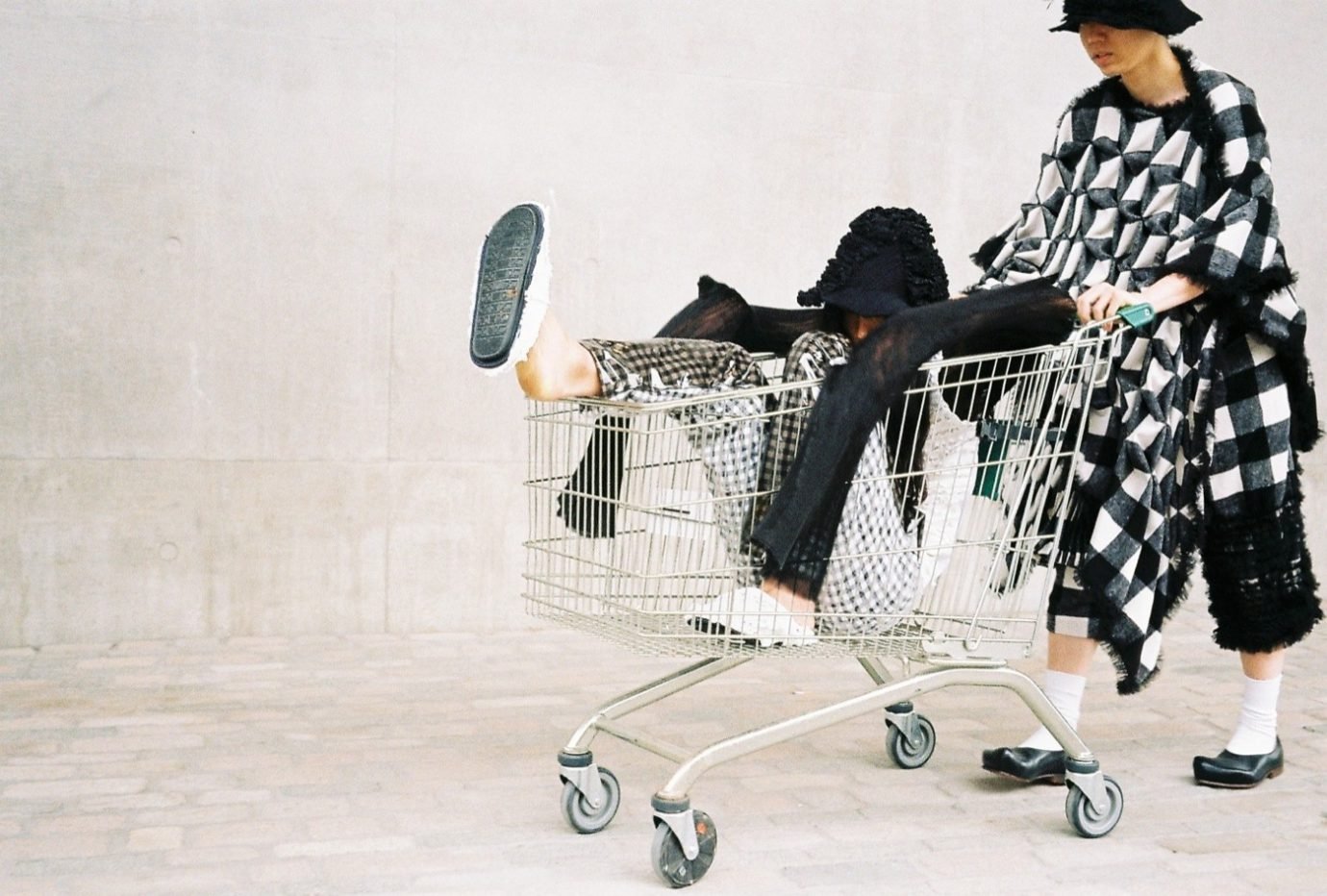Luckily for him, other people can. And it’s because the Australian designer has managed to make something so classic look fresh. Of course, we can see the renaissance – or ‘mock-Tudor,’ as he prefers – inspiration in the painterly palettes, fresh linens and rich velveteen, in the leg of mutton gathers and lace ruffs. But when you see the leather, things get even more interesting – oversized courtier style berets are made modern, balloon sleeves become almost upholstery and the bustiers (Dalah taught himself corsetry this year) get fiercer. With small tweaks, these silhouettes became something different entirely: the broadened and dropped shoulders manage to manipulate posture, undone flies create angular shapes. And the trouser legs that trail so nonchalantly? They juxtapose the rigid, restrictive quality that period dress traditionally upheld. Every glitch is carefully calculated and every misfit is purposeful, because if there is one thing Dalah knows how to do, it’s quality.
New Waves: Jordan Dalah
Meet the BA graduate making the classic look fresh.
If anyone exemplifies the notion that the artist is separate from the art, it is Jordan Dalah. Sitting by the Granary Square fountains in the sweltering summer heat, the Australian designer looks minimalistic and sporty in his shorts, T-shirt and trainers – a look that couldn’t be more different to his opulent final collection. He’s more than aware of the contrast. “I am separate to what I have created because personally, I can’t engage with it on the same level as wearing it.”
“I’ve been toiling since last year,” he tells me. “I knew what I wanted to do from the start.” This meant combining elements of art and even the unfinished architecture degree he left behind when he came to London. “When I was younger I used to paint traditional portraiture. Now, I’m referencing the people in the painting but also the process – me priming my canvas, stretching it, adorning with layers,” he motions with his tanned hands. “These layers mirror the way a person in the Victorian or renaissance period might get dressed in the morning.” I don’t know how Dalah has seen enough sun to tan, because it seems he doesn’t get out much – in the best way possible. “Everyone always says, ‘you never fucking leave!’ But, they are right,” he admits. “I mean, the building shuts at 10pm but I go home and carry on sewing. I enjoy it.”
Despite his obsessive work ethic, the headstrong designer knows his worth and is not afraid to speak out about the nature of the industry. “I think there are lots of problems with interning in London. It’s exploitative,” he says. “If you’re not getting paid then you better be learning something. I always made sure I was learning. In many ways I am the world’s worst intern because I am confident enough to say no to someone who wants to make me run around London. You have to stick up for yourself.” He is quick to assure me though, that his placement year at Chalayan and J.W Anderson was invaluable. “If you go to a huge company it’s hard to learn as much,” he explains. “Everything I know about pattern cutting and sewing is from the machinists at J.W. Anderson. They never treated me like they thought they were above me and they always took the time to help me.”
It’s from seeing first-hand how these independently minded labels work that Dalah decided he would one day set up his own. In fact, he intends to start right now, taking a year before applying for MA fashion at Central Saint Martins. When people began requesting his work for shoots after the BA show, he took the ball and ran with it. A two-tone satin top from the runway show has been so highly requested that it’s now double-booked on some days. “I am working on making different colourways,” he says determinedly. Is it flattering when people get in touch? “It’s humbling,” Dalah responds. More than that, it’s a sign. “I used to see people around the studios and they were just an undergraduate, but now they’re huge within our fashion community. I don’t see why, if I continue down the path that I’m on, something like that couldn’t potentially happen for me.”
In his mind, it boils down to the basics. “I’m lucky enough to have a base in London. If I have a sewing machine, an overlocker and an iron, I can make clothing.” For now, the plan is to generate more interest. “I’m not the best at networking but I am hoping my clothes will speak for themselves.” We hear them loud and clear.

